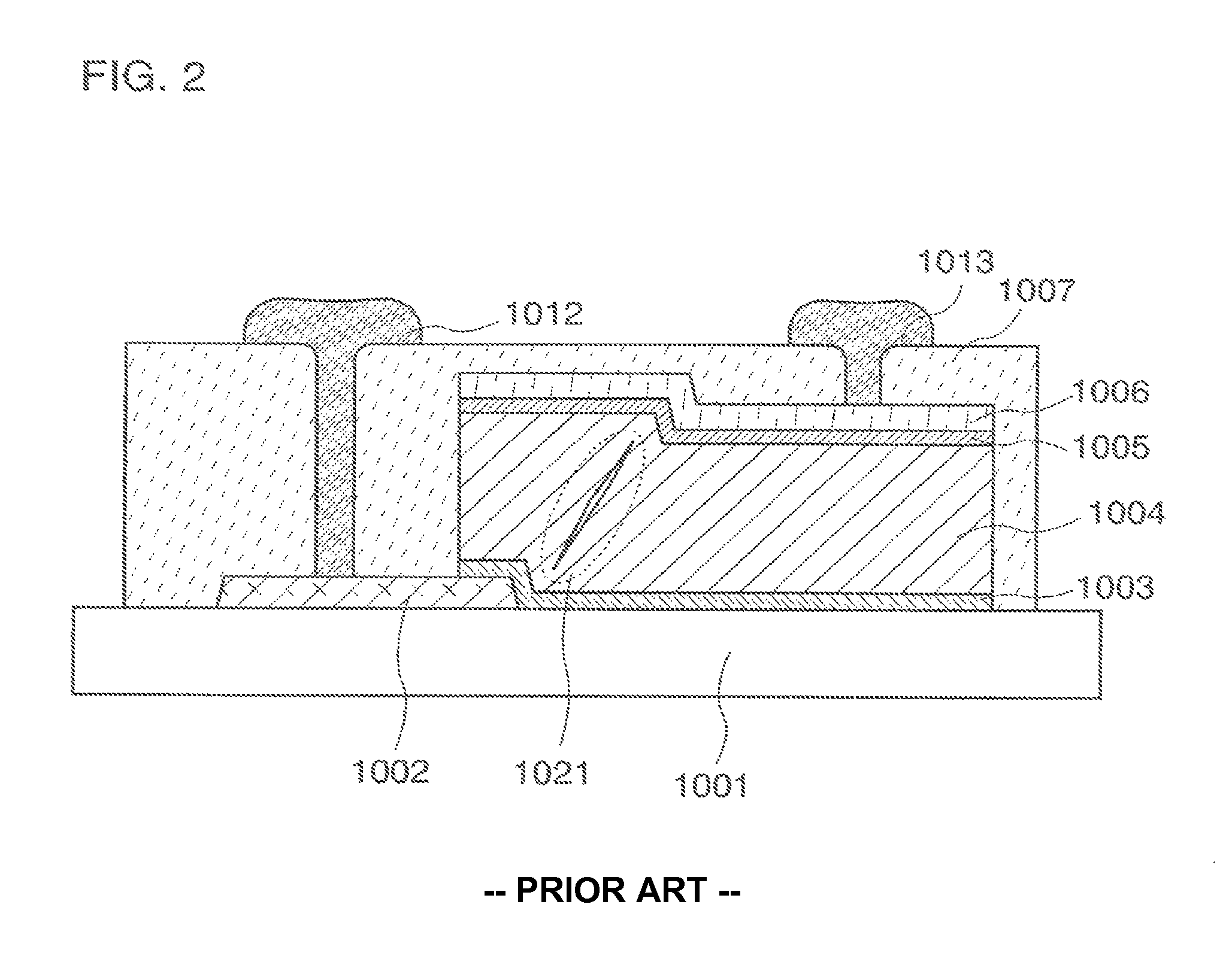Photoelectric conversion device and semiconductor device
a conversion device and semiconductor technology, applied in semiconductor devices, solid-state devices, electrical devices, etc., can solve problems such as leakage current occurrence and defects, and achieve the effects of reducing power consumption, reducing leakage current, and highly reliable photoelectric conversion
- Summary
- Abstract
- Description
- Claims
- Application Information
AI Technical Summary
Benefits of technology
Problems solved by technology
Method used
Image
Examples
embodiment
[0053]A photoelectric conversion device of the present invention will be described with reference to FIG. 1, FIGS. 4A to 4C, FIGS. 5A and 5B, and FIGS. 6A and 6B. The present invention is not limited to the following description, and it is easily understood by those skilled in the art that modes and details herein disclosed can be modified in various ways without departing from the spirit and the scope of the present invention. It should be noted that the present invention should not be interpreted as being limited to the description of the embodiment modes to be given below.
[0054]Manufacturing steps of a photoelectric conversion device of the present invention are shown below. A first conductive film 151 is formed over a substrate 101 first (FIG. 4A).
[0055]A flexible substrate is used as the substrate 101, and specifically, a film of polyethylenenaphthalate (PEN) is used. In addition to polyethylenenaphthalate, a film of polyethyleneterephthalate (PET), polybutylenenaphthalate (PBN...
example 1
[0073]In Example 1, a photoelectric conversion device of the present invention is compared with a conventional photoelectric conversion device with reference to FIGS. 23A and 23B.
[0074]In this example, a THB test (Temperature Humidity Bias test) is conducted to evaluate the devices under conditions such as a high temperature of 60° C., a humidity of 90 to 95% and a bias of −5V.
[0075]FIG. 23A shows results of the THB test for the conventional photoelectric conversion device shown in FIG. 2, and FIG. 23B shows results of the THB test for the photoelectric conversion device of the present invention shown in FIG. 1. In addition, in FIGS. 23A and 23B, the horizontal axis represents VL (V) and the vertical axis represents a frequency in each voltage. In addition, VL represents a voltage at which leakage current is generated.
[0076]In the result of 240 hours of the test time, shifts of Vr leakage are seen in both results for the conventional photoelectric conversion device shown in FIG. 2 a...
example 2
[0078]Example 2 describes an example in which an electrode overlapping a photoelectric conversion layer has a structure of stacked films with reference to FIGS. 3A, 3B, 16A and 16B. It should be noted that the same parts as those described in Embodiment are shown by the same reference numerals.
[0079]In this example, an example in which the electrode 102 of FIG. 1 has a three-layer stacked structure is shown in FIGS. 3A, 3B, 16A and 16B. In FIG. 3A, the wiring 131 is made from titanium (Ti), the wiring 132 is made from aluminum (Al), and the wiring 133 is made from titanium (Ti). When the wiring 131 is formed with a transparent electrode, for example, an indium oxide-tin oxide alloy (also referred to as indium tin oxide), or an indium oxide-tin oxide alloy containing silicon (Si) (also referred to as indium tin oxide containing Si) may be used. Besides, zinc oxide (ZnO), tin oxide (SnO2), indium oxide, or an indium oxide-zinc oxide alloy formed by using a target in which indium oxide...
PUM
 Login to View More
Login to View More Abstract
Description
Claims
Application Information
 Login to View More
Login to View More - R&D
- Intellectual Property
- Life Sciences
- Materials
- Tech Scout
- Unparalleled Data Quality
- Higher Quality Content
- 60% Fewer Hallucinations
Browse by: Latest US Patents, China's latest patents, Technical Efficacy Thesaurus, Application Domain, Technology Topic, Popular Technical Reports.
© 2025 PatSnap. All rights reserved.Legal|Privacy policy|Modern Slavery Act Transparency Statement|Sitemap|About US| Contact US: help@patsnap.com



